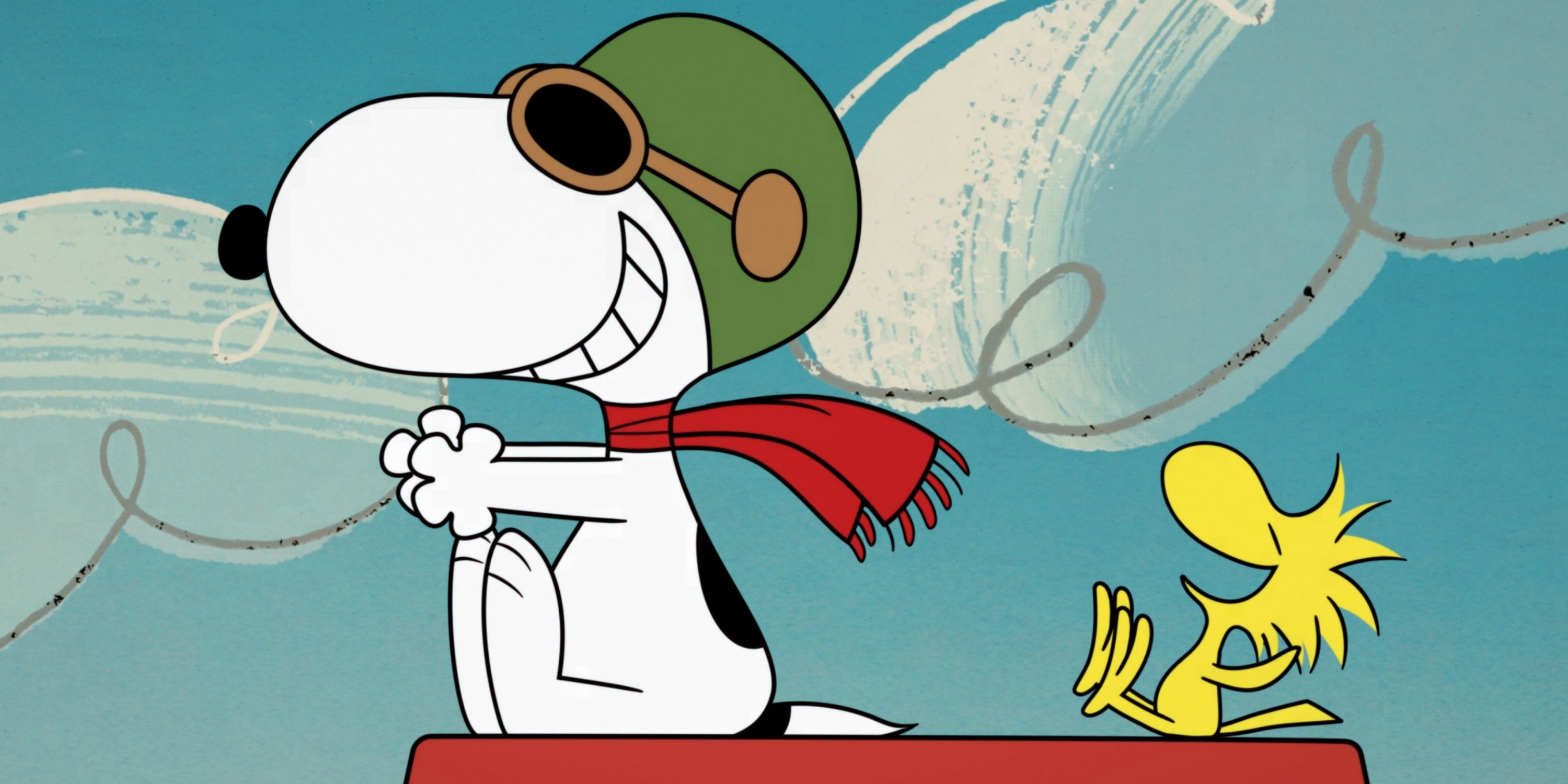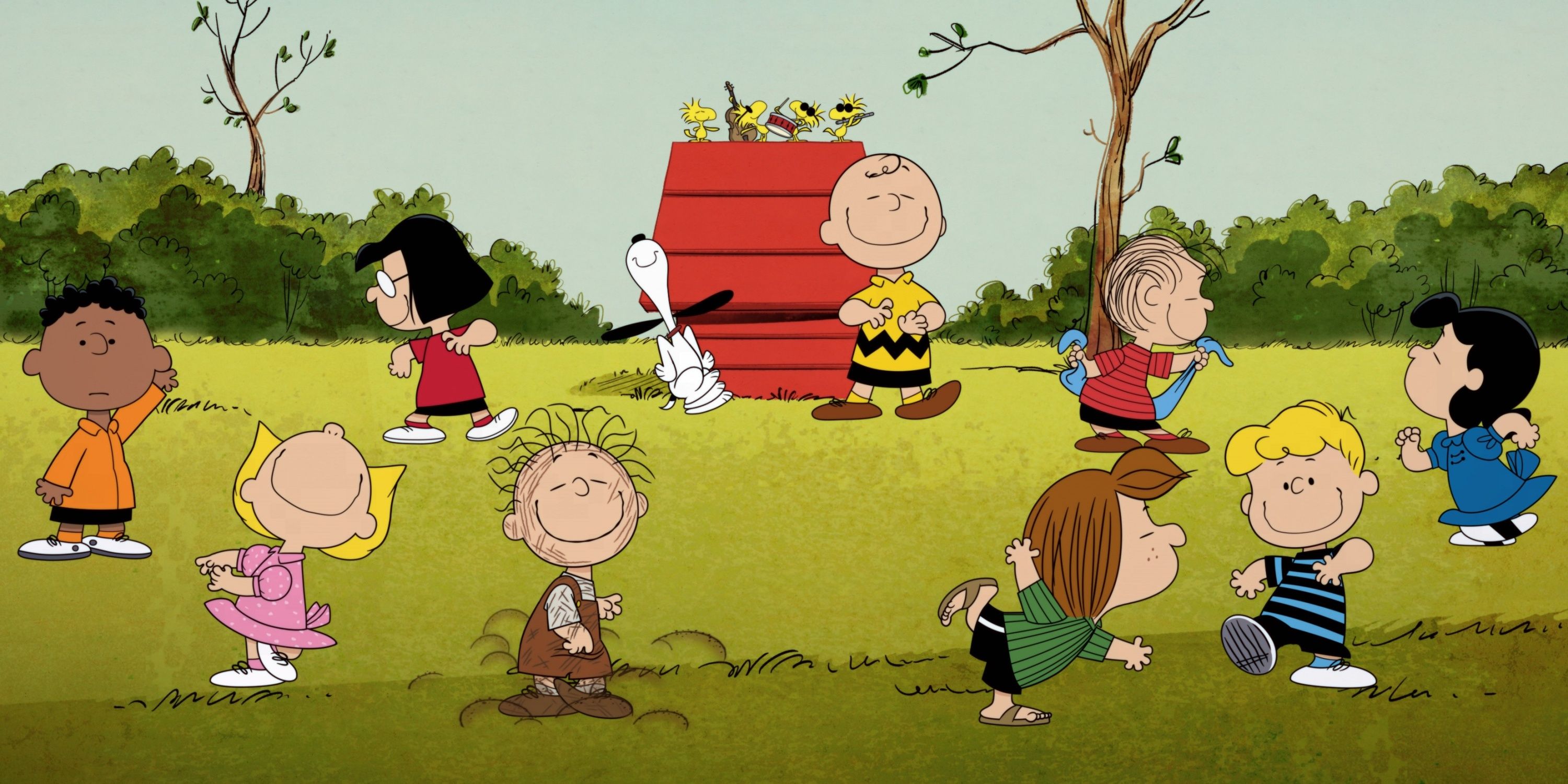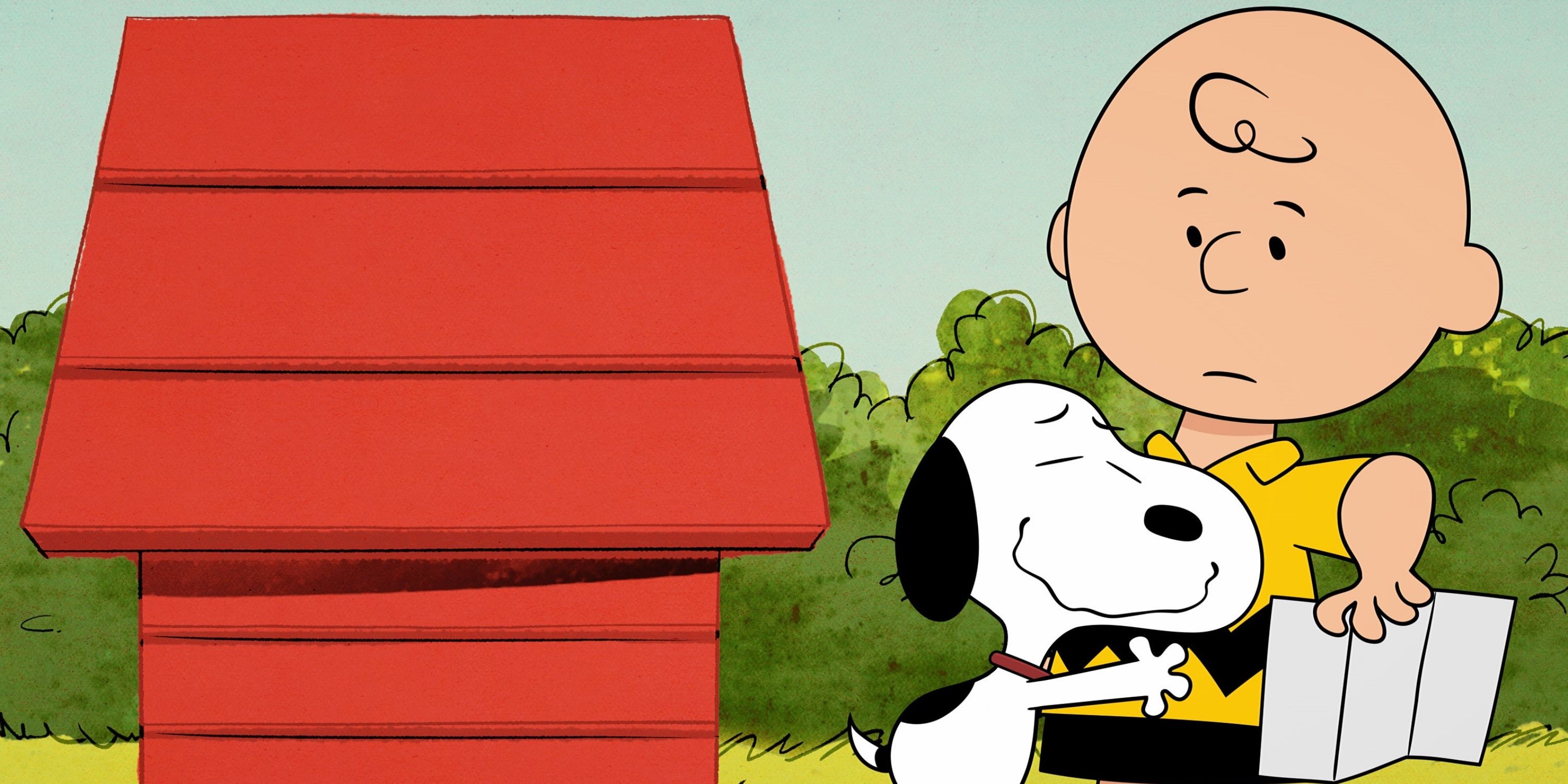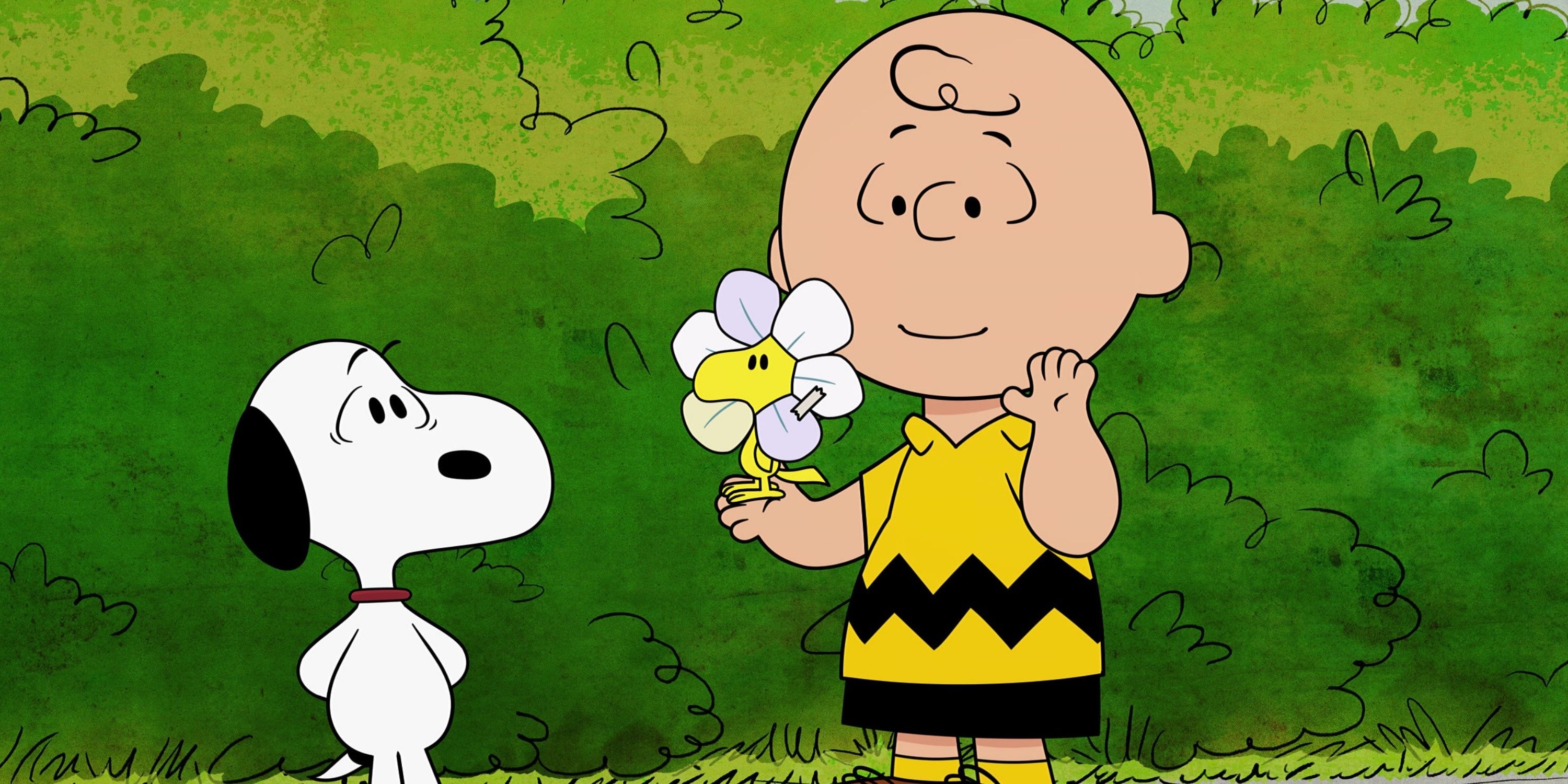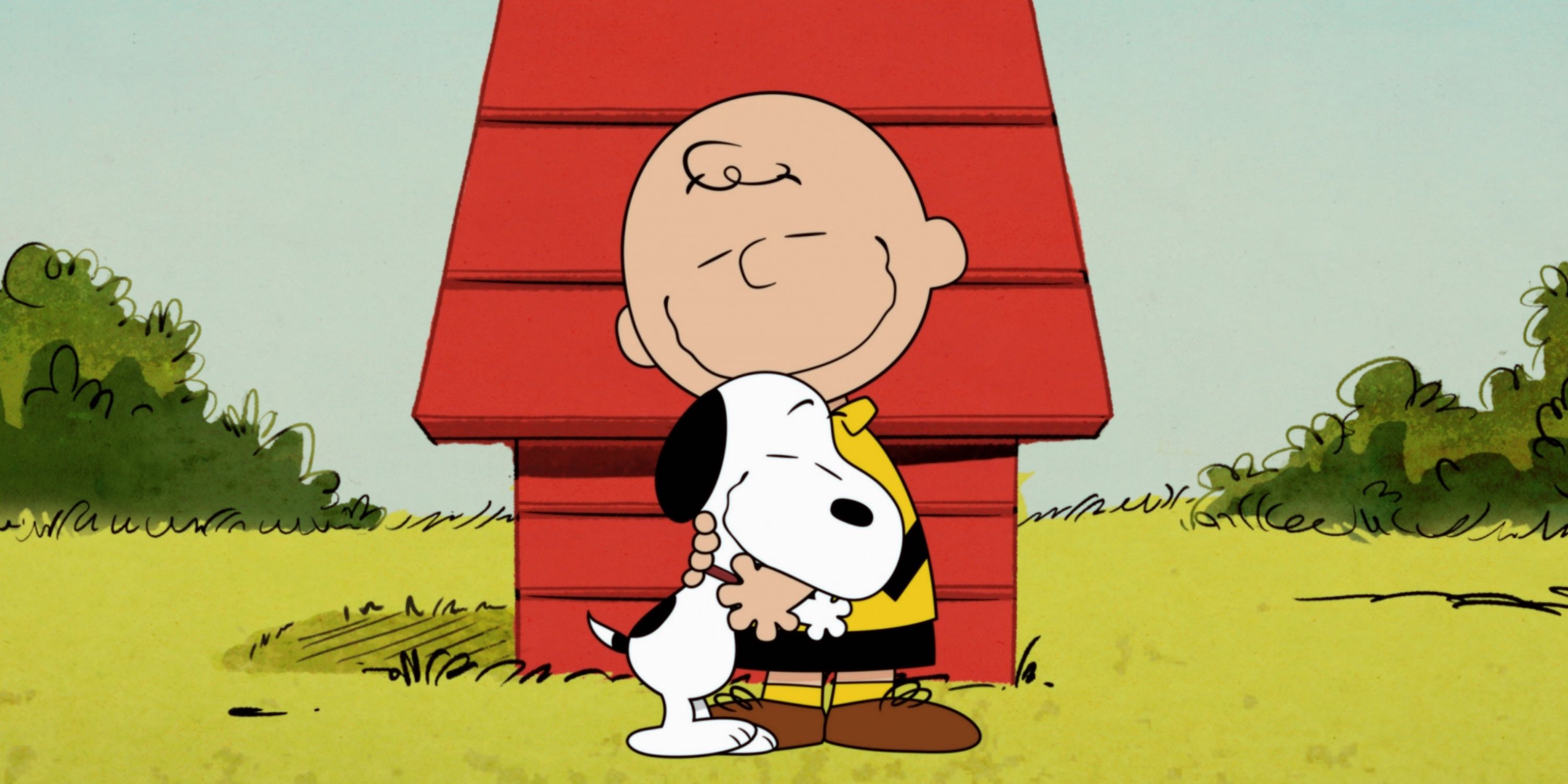The six-episode Apple TV+ original series The Snoopy Show, designed for kids and families to enjoy, stars the beloved beagle, his feathered friend Woodstock, and the rest of the Peanuts gang, including Charlie Brown, Lucy, Linus, Franklin, Schroeder, and Peppermint Patty. Inspired by the famous comic strips from Charles M. Schulz, the episodes – each broken into three seven-minute adventures – provide a sense of nostalgia while also allowing for a new generation to fall in love with these characters that have entertained audiences for seven decades.
During this 1-on-1 phone interview with Collider, showrunner Mark Evestaff talked about how he got involved with telling stories about Snoopy and the Peanuts gang, what you can’t do when it comes to these characters and their world, what he loves about the beloved beagle, the challenges of telling stories for a character that doesn’t speak, how he ended up on this career path, and what he’d like to continue to do with these characters.
COLLIDER: Thank you for talking to me about Snoopy and the Peanuts gang! You did Snoopy in Space and now you’re also doing The Snoopy Show. How did you come to this world?
MARK EVESTAFF: I was working on a show called Cloudy with a Chance of Meatballs and there were some rumors swirling about WildBrain working with the brand. I was very vocal, probably to an annoying level, and just started to be a part of the initial conversations of, what kind of things can we do? What’s been done? What can’t we do? I’m a lifelong Peanuts fan. That all swirled together and manifested after enough ideas. [Executive Producer] Stephanie Betts brought me in and we put a team together and took it from there. Snoopy in Space was an interesting one because it was our first entry back into the series for the brand. My wife is actually the story editor on that. In terms of working together and collaborating, that was a pretty great experience. We got to work with NASA. From there, we moved right into The Snoopy Show.
When it comes to this brand, what can’t you do when it comes to the Peanuts gang?
EVESTAFF: Not in the cast of Snoopy in Space, but certainly with The Snoopy Show, the germ of the idea and the initial thought usually comes from the strip. In fact, in almost all cases, you can find some way to point back to the strip. And so, there are certain rules and certain things that Charles Schulz had when he was doing a strip, and one of them is no adults, which is neat because it forces the kids to solve their own problems. There’s also a no parents allowed thing. One of the rules is that when Snoopy is in his fantasies, you can’t see the bottom of the dog house because of the idea that Snoopy doesn’t actually go anywhere. That’s a challenge, but also a nice idea to carry through, and we’ve certainly been faithful to that. And then, another one is that you never see the inside of Snoopy’s house, which is a fun conceit for us to play with. He has a pool table in there, he’s got a pool, he’s got a Van Gogh, and he’s got whatever you need with cartoony logic. Another one is no technology past around 1970, so you won’t see any cell phones and you don’t see any computers. The good thing is that these kids are often playing outside so that never came into play. If you need a cell phone to tell your story, unless it’s a great story, I think you can do without that. There’s lots of fun to be had, but those are some of the ground rules we played with when we were making the show.
What is the appeal of Snoopy and his world for you? What do you personally love about this beloved beagle?
EVESTAFF: The idea that you have this great neighborhood filled with great characters. For me, I always loved a lot of the Flying Ace strips, with his personas and his flights of fancy integrated in this kid world. In the strip, you have his insights, and we’ve tried different ways to try to get those ideas in the show. It really was that stuff that can exist in a strip, but that can never exist in reality, both in terms of playing with having a walking dog and this idea that you have a dog sleeping on a two-dimensional house. He couldn’t sleep that way, in even real fake life. Those optical illusions are the fun things that I love about what Charles Schulz did.
Is it more challenging or more fun to tell a story where your title character doesn’t speak?
EVESTAFF: It’s way more challenging, infinitely in some ways, because they can’t express themselves. And also, you contrast that against the idea that in the strip, he’s very vocal. He always speaks his mind, in thoughts. That was a huge challenge for our show. It’s Snoopy and Woodstock, and his bird friends. It was a big challenge to get past that. One of the ways we solved that was just to dig back into the strip, look at the posing, look at the acting, and then draw it. We have a team of really talented artists that worked really hard to get that emotion, to get that acting, to get the pantomime, to get it right.
We get to see Snoopy’s brothers and sister, some different Woodstocks, and the entire Peanuts gang. What’s it like to wrangle so many characters into these little mini-episodes within each episode? Does it feel like it’s easier when you have more than you need to work with, or is it hard to find a balance between what to focus on and how much time to give everything?
EVESTAFF: It’s funny because you have this wealth of some of the most iconic characters ever created. At first, you wanna use them all, but you can’t use them all because you only have seven minutes. A lot of it was led by the stories and the strips and trying to be faithful to that. But then, sometimes you’re not gonna get all of the kids in. Some of my favorite episodes are the ones that are just between Snoopy and Woodstock. If you asked me at the onset of the show, I wouldn’t have had the confidence in that that I have now, after seeing it all together with all of the people that worked on it. That was a big challenge and it was pretty daunting, not to mention the idea of just working with these characters being a very daunting idea and not wanting to ruin them for a new generation.
When you do something like this, it feels like it’s a whole other sense of responsibility, when it comes to doing right by Charles Schulz and his family. How much of an expert on Snoopy and the whole Peanuts gang do you feel that you have to be in order to actually feel comfortable with them being in your hands?
EVESTAFF: That’s a good question. I don’t think you ever feel that comfortable. Personally, I never feel that comfortable because there’s always more and there’s always something you forget, but I’m reassured by the fact that our team is loaded with very passionate fans first who are artists that are completely committed to this show and completely committed to getting it right. That gives me reassurance. You’re scared, but at the same time, how can you not take this opportunity that’s given to you? Most of the people on the show are fans first and they’re super talented. It really is the most talented crew that I’ve worked with. That helps build your confidence.
How did you end up on this career path? Had you always know you wanted to get into animation?
EVESTAFF: Surprisingly enough, I started drawing cartoons and comics and realized that I wasn’t very good at it. I knew that I wanted to at least be a storyteller in some capacity. I’ve just been fortunate enough that my career path has led me here and I’ve gotten to surround myself with really talented people, and it’s worked so far.
What do you most enjoy and love about telling stories in the animated space, as opposed to working in live-action?
EVESTAFF: This is cliche, but it really is the go anywhere, do anything of it all. There’s the idea of that, but also the characters that you can work with. Good storytelling is good storytelling, but I love being able to use the imagination to be able to push things into shapes and places they’ve never been. I certainly don’t do that, but I’ve been fortunate enough to work with people that are talented enough to do so.
What would you say the biggest challenges are in being a showrunner for an animated series?
EVESTAFF: That’s a good question. The challenge is that you never have enough time. You’re working on a schedule that’s finite and you’re trying to make the best show you can. There are a lot of people behind this show, and the help and support have been great. It’s been a dream come true to work on this show because everyone, from production, to the schedule, to the artists, really wants to try to get this. In that sense, it’s been completely fulfilling.
What’s it like to do something like the Cloudy with a Chance of Meatballs TV series, where you’re working in a world that people know, but also creating a new thing?
EVESTAFF: It’s always finding where those guardrails are, but also trying to push it and put a little bit of a spin on it, and trying to find like-minded people to work with you, to either build out the world or help push the character and find new ways of telling stories. That’s the fun of it.
Is there a character in this Peanuts world that you find that you most identify with and feel a special affinity for?
EVESTAFF: It’s funny because people say that everyone wants to be Snoopy, but pretty much everyone is Charlie Brown. There’s definitely a little bit of truth to that. I don’t think I’m any different.
What do you think it is that keeps Snoopy and the Peanuts gang around and going strong for so many years? What do you think it is that we can still learn from these characters who really have become timeless?
EVESTAFF: Part of it is these universal themes and part of it is the incredible design. You have almost 18,000 strips. Charles Schulz honed his skills for a long time. It took him five to 10 years to get anywhere close to these characters. It’s that commitment, in terms of design and talent, and the idea that these characters don’t always win. We have a landscape now where there’s a lot of superheroes, lots of aspirational characters and lots of winners, and Charlie Brown is not that. He’s rejected and he fails, but it gives us, as storytellers, this idea of resilience and hope. We’re able to put that bit of emotional depth into telling stories that don’t have to have a happy ending, but a more real ending. I know kids relate to that, and certainly my kids do. It’s the idea that things don’t always work out, but there’s always hope, there’s always friendship, there’s always family, and you can work through it and get the win.
What do you hope to continue to do in this Peanuts world?
EVESTAFF: I love working on this show and I would love to continue. Snoopy in Space is something that wasn’t necessarily in my wheelhouse at the beginning, but this great partnership with Apple TV+ and the fact that NASA is on board is a crazy experience that’s a once in a lifetime opportunity. I’d be happy to do more of any of that stuff.
The Snoopy Show is available to stream at Apple TV+.

